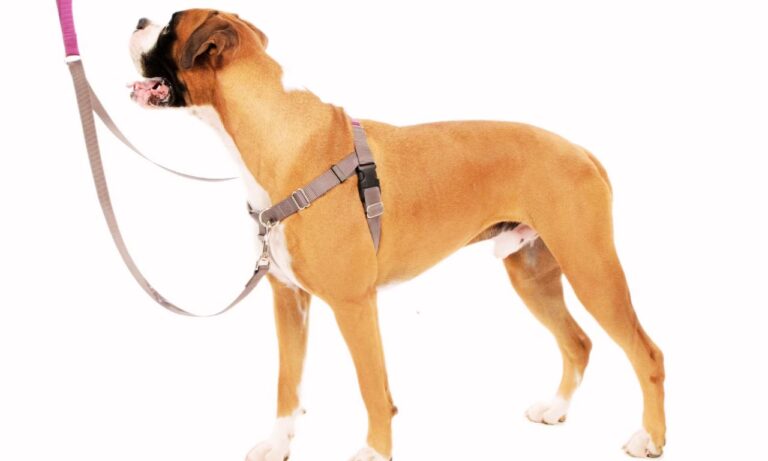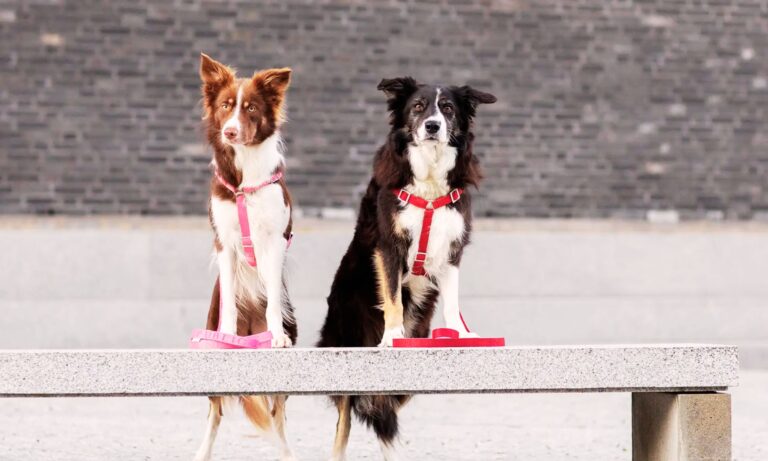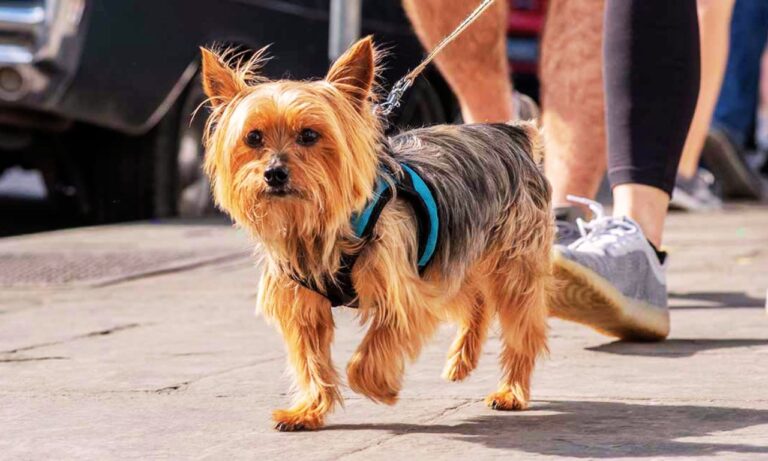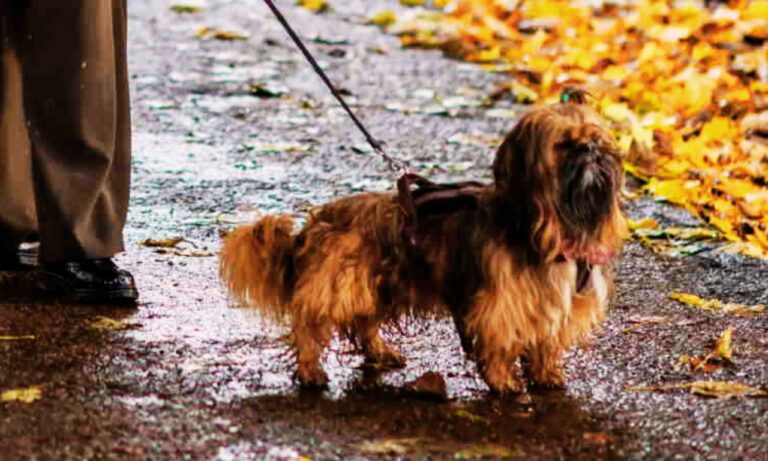Before you begin any training session, it is crucial to understand why having the right gear is so important. A properly assembled collection of tools not only makes training more effective but also ensures the safety and comfort of your dog. In building your dog training equipment list, you will learn how to choose tools that match your dog’s size, breed, and temperament. For energetic dogs that pull, collar for large dogs that pull offers practical solutions for training beginners.
This foundational knowledge helps you avoid common mistakes new pet owners make and allows you to move forward with confidence. If you prefer cute and charming designs, cute dog collars with strong designs are ideal for creating a friendly training atmosphere.
Blog Highlights
ToggleBuilding Trust with the Right Dog Tools
Every piece of equipment acts as a bridge between you and your pet, creating a pathway for communication and trust. When you invest time in selecting the right materials and ensuring proper fit, you set a strong precedent for the rest of your training journey. Compare security systems with Invisible Fence vs Halo, useful for setting up a safe training environment.
A well-researched approach and the careful assembly of your dog training list will ultimately lead to long-term success and a happier, better-behaved companion. For smaller breeds, you can see dog collars for little dogs, ensuring comfort and effectiveness.

The Role of Local Regulations and Practical Needs
In addition to safety and functionality, it is essential to consider local regulations when choosing training equipment. Many areas have specific leash laws and guidelines regarding pet gear. Familiarizing yourself with these rules not only keeps you compliant but also ensures that your training sessions are safe and effective in any setting. With this knowledge, your dog training equipment list becomes a tool that supports every aspect of responsible pet ownership. For a unique look, consider collars for Cairn Terrier, designed to meet the specific needs of this spirited breed.
What Are Dog Collars?
Are Collars Gateway to Effective Training
The collar is usually the first piece of equipment a new pet owner will invest in, serving multiple purposes such as identification, control, and as a foundation for additional training tools. It is important to choose a collar that fits well and is appropriate for your dog’s breed and size.
For example, a small breed might require a collar that adjusts between 10 to 14 inches, while larger dogs may need one that fits between 20 to 24 inches. The fit of the collar is crucial, as one that is too tight may cause discomfort, and one that is too loose may slip off during training sessions. For a heavy‑duty option, collars for St. Bernard, ensures safety and durability for large dogs during training.
It is Tough Choosing Your First Collar?
Well, traditional flat collars are an excellent starting point because they combine comfort with practicality. Over time, you might explore specialized collars—such as martingales or behavior-correcting options—when basic training methods need reinforcement.
Using advanced devices like shock collars or e-collars should be reserved for situations where additional control is needed and only under proper guidance. Every careful choice you make in selecting a collar becomes a vital part of your dog equipment list. For owners of Siberian Huskies, collars for Siberian Husky, designed to combine durability with comfort.
How To Choose The “Right Collar” for Different Breeds
Different breeds have unique requirements when it comes to selecting the ideal collar. Special attention must be paid to the material, width, and adjustability to ensure maximum comfort and efficiency.
1. For the Majestic Alaskan Malamute
If you own an Alaskan Malamute, consider options frequently recommended as the Best Dog Collars For Alaskan Malamute. These collars are constructed with thicker, more robust materials to accommodate the Malamute’s large neck and heavy coat. They are often adjustable to suit neck sizes ranging from 22 to 26 inches, ensuring a secure yet comfortable fit. For owners of an Alaskan Malamute, dog collars of Alaskan Malamute are good to consider for training.

2. For the Spirited Beagle
Owners of Beagles should look into the Best Dog Collars For Beagles, which are designed with lightweight materials and adjustable fits in the range of 14 to 18 inches.
These collars focus on flexibility and comfort, allowing the Beagle to roam and explore safely while remaining secure during training sessions. If you’re raising a lively Beagle, check out the Best Dog Collars For Beagles to find options designed for comfort and secure training, tailored to your breed’s unique needs.

3. For the Powerful Rottweiler
For Rottweiler owners, the Best Dog Collars For Rottweiler are engineered to be robust and durable. Typically, these collars adjust between 20 to 24 inches in circumference, ensuring they can handle the strength and energy of a Rottweiler without compromising on safety. For those with a strong and determined Rottweiler, learn more about the Best Dog Collars For Rottweiler to select a robust collar that meets the specific challenges of training a powerful dog.

Incorporating these breed-specific recommendations into your dog equipment list will help you provide the best care tailored to your pet’s needs.
How To Wear Dog Collar: Step-by-Step Guidance for Fitting a Collar
Properly fitting a collar is a critical first step in ensuring effective training. A collar that fits correctly lays the groundwork for a successful training experience and serves as the cornerstone of your dog equipment list.
1. Measuring for Success
Begin by measuring your dog’s neck with a flexible measuring tape. This measurement is essential in selecting a collar that falls within the recommended range for your breed. Accurate measurements help prevent discomfort and ensure the collar remains secure during use. If you own an American Bully, discover proper techniques to wear collars on American Bully, ensuring a secure fit during training.

2. Adjusting with Precision
Once you have the right collar, adjust it so that it fits snugly yet comfortably. A good rule of thumb is to ensure that you can slide two fingers between the collar and your dog’s neck. This simple test guarantees that the collar is neither too tight nor too loose, promoting safety and ease during training sessions. Ensure accuracy with the size chart for dog collars, a valuable tool for every beginner’s dog training equipment list.

3. Ongoing Fit Checks
As your dog grows or undergoes changes in weight, regular inspections of the collar’s fit are essential. Maintaining this vigilance guarantees that your dog training equipment list remains effective and that your pet stays comfortable throughout its training journey. For Maltipoo owners, learn proper techniques to wear collars on Maltipoo, making training easier.
What Are Dog Leashes and Harnesses?
After mastering collars, the next step in your training routine involves selecting the right leashes and harnesses. These tools provide you with the control necessary during walks and training sessions while ensuring your dog’s comfort and safety. Master timing and technique with keys to using a leash training collar, which offers step‑by‑step guidance.

First of All: Learn Leash Control…
A well-chosen leash is indispensable. Standard nylon leashes, typically around six feet long, offer a balance between freedom of movement and secure control. Retractable leashes can extend up to 26 feet, but they demand careful use in crowded or high-traffic areas. Your leash choice should align with your dog’s strength and activity level, ensuring it complements your overall dog training list seamlessly. Compare practical gear with Leash vs Harness for Dogs, a guide that helps refine your dog training equipment list.
Then, Choose a Harness for Better Support
Harnesses are especially beneficial for dogs prone to pulling. They distribute pressure across the chest rather than the neck, reducing the risk of injury. To find the right harness, measure your dog’s chest circumference just behind the front legs.

For small breeds, a harness designed for 14 to 18 inches is usually sufficient, while larger breeds may require one that fits within 20 to 24 inches. Following the manufacturer’s instructions for adjustment guarantees a secure fit, making your harness a vital addition to your dog training list.
Lastly, Practice Leash and Harness into Daily Routines
As you become familiar with the collar, the next logical step is to combine it with a leash and harness during training sessions. This integrated approach helps your dog learn proper walking behavior and builds the foundation for more advanced training techniques. With the right equipment in hand, every training session becomes a step toward a happier and better-behaved pet. Also, stay compliant by reviewing Dog Leash Laws, essential for every responsible pet owner.
Does Your Dog Need Advanced Training Tools?
When basic tools have served their purpose and your dog shows steady progress, you may consider introducing advanced training devices. These tools, which include shock collars, e-collars, and training clickers, should be used sparingly and only under professional guidance.
Use of Shock Collars
Shock collars deliver a mild electric stimulus designed to capture your dog’s attention. It is crucial to start with the lowest setting and gradually introduce the device. E-collars, equipped with remote controls and adjustable intensity, can be particularly effective for off-leash training sessions. When paired with a training clicker, which produces a consistent sound that signals reward, these advanced tools can refine your dog’s response to commands. For energetic pups, discover the benefits of training shock collars for puppies, designed to introduce training gently.

Proceeding with Caution
Introducing advanced devices requires a systematic, step-by-step approach. Always consult with a professional trainer before integrating these tools into your routine. Pair the stimulus from an e-collar or shock collar with clear verbal commands or hand signals, and closely observe your dog’s response.
This measured integration is a crucial extension of your dog training equipment list, ensuring that advanced tools are used safely and effectively. Explore practical options in dog shock collars, providing a deeper understanding of advanced training methods.
Step-by-Step Training with Each Tool: From Basics to Advanced
Now that you are familiar with the various types of equipment, it is time to explore a step-by-step guide that will help you incorporate each tool into your training routine. This gradual approach builds your dog’s trust and reinforces positive behavior, making every session a productive learning experience.
Transforming Basic Commands into Lifelong Habits
Begin by allowing your dog to become familiar with a traditional collar. Introduce the collar in a calm environment and let your dog explore it while associating it with positive experiences, such as gentle petting or a favorite treat. Once your dog shows comfort with the collar, attach a standard leash and let them walk in a secure area. This progressive exposure reduces anxiety and builds a foundation for more advanced techniques.
Get professional advice on advanced training tools with Do Vets Recommend Shock Collars?, an important read for novice trainers.

Integrating the Harness for Enhanced Control
If your dog tends to pull or becomes overly excited during walks, gradually introduce a harness. Start by letting your dog wear the harness indoors, allowing them to adjust to the new sensation without distraction. After your dog is comfortable, combine the harness with the leash for outdoor walks. Increasing the duration of these walks slowly, while rewarding good behavior, further reinforces the training process and solidifies your dog training equipment list.

Introducing Advanced Devices Gradually
When your dog has mastered the basics, you may incorporate advanced tools into your routine. Begin with a training clicker, using the sound to mark positive behavior before offering a reward. If you decide to use an e-collar, start with the lowest intensity setting and pair the stimulus with a simple command. Careful observation and consistent practice ensure that every tool from your dog training list is used at the appropriate time and in the right manner. If you’re seeking comfort and efficiency, use comfortable dog collars to enhance your training setup.
How To Ensure Comfort and Security During Dog Training?
Safety is paramount when training your dog, and every piece of equipment must be used with the utmost care. From ensuring proper fit to regular maintenance checks, safeguarding your pet’s well-being is a continuous priority.

1. Staying One Step Ahead with Safety Measures
Always inspect your equipment for signs of wear or damage before each training session. A collar that is too tight or a harness that is ill-fitted can lead to discomfort or injury. By regularly checking the condition of your gear, you protect your dog and maintain the integrity of your dog training equipment list.
2. Responsible Use of Advanced Tools
When using advanced tools such as shock collars or e-collars, pair them with positive reinforcement techniques. Proper supervision during every session helps you adjust settings as needed, ensuring that your dog remains both responsive and comfortable. By approaching these devices with caution and care, you add an extra layer of safety to your training routine. Plan your budget by checking the price of dog shock collars, ensuring you invest wisely in your dog training equipment list.
What Practical Considerations To Take While Training Your Dog?
Effective training goes beyond just the equipment—it also involves understanding local regulations and adapting to your environment. Being well-informed ensures that every piece of your dog training equipment list is used within legal and practical boundaries.
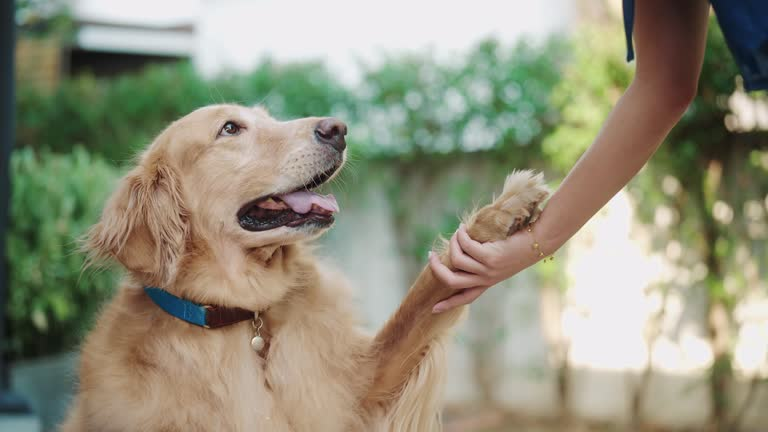
1. Understanding Local Leash Laws
Many communities enforce specific leash laws and guidelines on pet equipment usage. Prior to heading out for a training session, research local regulations by checking municipal websites or consulting local veterinarians. This step guarantees that you remain compliant with the law while ensuring a safe experience for your dog. Stay updated with local guidelines by reviewing Ontarios New Regulations, ensuring your training methods comply with current laws.
2. Adapting to Real-World Conditions
Training in public spaces requires extra precautions such as using reflective gear during early morning or evening sessions. Familiarize yourself with any practical considerations in your area, and make sure that your dog’s equipment is both visible and secure. These measures will not only protect your dog but also reinforce the overall reliability of your dog equipment list. For legal insights, you should know the Tethering and Chaining Laws in Lee County, crucial for responsible pet owners.
Unleashing the Full Potential: A Detailed Look at Collars
Collars are a fundamental part of any dog training regimen. A thorough understanding of materials, fit, and functionality is essential for selecting the right collar for your pet.

Materials That Matter
Collars come in various materials, each with distinct benefits. Nylon collars offer lightweight durability and easy maintenance, while leather collars provide a classic, robust option for daily wear. The material you choose should reflect your dog’s activity level (rough materials can make dogs aggressive too) and lifestyle, ensuring that the collar is a long-lasting addition to your dog training equipment list. Investigate behavioral impacts with shock collars to make dogs aggressive, which provides insights for ethical training.
The Art of Adjustability
A collar that can be adjusted to fit your dog’s changing size is indispensable. Regular adjustments ensure that your dog remains comfortable and that the collar performs its intended function. Whether your dog is growing or experiencing fluctuations in weight, an adjustable collar from your dog training equipment list will always provide a secure and reliable fit. Learn about proper approach with Do Not Approach Dog Vest, ensuring your pet remains safe during training.
Enhancing Functionality Through Design
Modern collars often incorporate features that enhance both safety and style, such as reflective strips for night-time visibility or padded interiors for extra comfort. These design innovations not only improve the training experience but also make your dog’s equipment a more integrated part of their daily routine. For all your pet care needs, see other Dog Essentials.
The Road to Consistency: Creating Lifelong Habits
Training is a journey that requires consistency, patience, and regular reinforcement. Establishing a routine that incorporates your chosen tools will help your dog develop positive habits that last a lifetime.

Crafting a Consistent Routine
Dedicate time every day to short, focused training sessions. This regular practice allows your dog to gradually build upon their skills and reinforces the lessons learned during each session. A consistent training routine ensures that every element of your dog equipment list works together harmoniously, paving the way for long-term success. Learn about versatility with Martingale Collar vs Harness, which can help you decide on the best control tool.
Positive Reinforcement as the Key to Success
Using rewards such as treats, praise, or playtime alongside your training tools creates an environment of positive reinforcement. This approach not only helps your dog understand which behaviors are desired but also builds a strong, trusting bond between you. The steady repetition of positive behaviors transforms basic commands into lifelong habits. For outdoor safety, see Dog Walking Safety, ensuring your training sessions are secure and stress‑free.
Documenting Your Journey
Keeping a training journal is a valuable practice that allows you to track progress and note any adjustments needed. Over time, this record will serve as a guide for refining your approach, ensuring that your dog training equipment list evolves along with your dog’s growing needs. Celebrate success stories with Rescue Dog Transformation, inspiring beginners to integrate training with care.
Bringing It All Together: Your Training Legacy
As you integrate every tool and technique discussed in this guide, remember that training is an evolving process built on a foundation of dedication and continual learning. Every component—from a well-fitted collar to advanced e-collars—contributes to the overall success of your training journey. If you’re curious about the differences between innovative training devices, Whistle Switch vs Fi Collar to see which might suit your beginner needs best.

Celebrating Small Wins
Each small achievement is a step toward a well-behaved and happy dog. Recognize the progress you and your pet make together, knowing that each successful training session adds to your legacy as a dedicated pet owner. This positive momentum strengthens your commitment to your dog equipment list and the lifelong habits you are cultivating. You can try designer Collars for dogs, perfect for pet owners looking to combine function and fashion.
Refining Your Approach Over Time
Training is not a one-time event but a continuous process. Remain open to learning new techniques and updating your equipment as needed. By staying proactive and adaptable, your dog training list will always reflect the most effective and humane methods available. Learn important safety tips to prevent accidents with the safety dog collar tips to prevent strangulation, ensuring your dog’s gear is both stylish and secure.
Looking Ahead to a Bright Future
The journey you embark on with your dog will be filled with challenges, triumphs, and countless opportunities for growth. By building a comprehensive and well-researched dog training equipment list, you are investing in a future where your dog thrives in every aspect of life. Embrace every moment and let each training session serve as a stepping stone to a deeper, more rewarding bond with your pet.
You can learn to make bow ties for dogs, perfect for beginners wanting to combine training with fun fashion. For creative projects that add a personal touch to your dog’s style, use the free dog bow tie sewing pattern to craft your own accessory.
Frequently Asked Questions
What items should be included in a complete dog training equipment list?
A comprehensive list includes a well-fitted collar, leash, and harness, as well as advanced training tools such as shock collars or e-collars and clickers. Each item is chosen based on your dog’s breed, size, and training needs, ensuring a safe and effective training routine.
How do I determine the correct size for a dog’s collar?
To select the proper collar size, measure your dog’s neck using a flexible measuring tape. For example, small breeds may require a collar that fits between 10 to 14 inches, while larger breeds might need one in the range of 20 to 24 inches. The goal is to ensure a snug yet comfortable fit, where two fingers can slide between the collar and the dog’s neck.
What are the advantages of using a harness over a collar for certain dogs?
A harness is particularly beneficial for dogs that tend to pull. It distributes pressure across the chest instead of the neck, reducing the risk of injury and providing better control. Harnesses are also a good option for dogs with respiratory issues or those prone to neck strain during walks.
How can advanced training tools like shock collars or e-collars be used safely?
Advanced tools should be introduced gradually and only after mastering basic commands. It is important to consult with a professional trainer, begin with the lowest intensity settings, and pair the stimulus with clear verbal commands or hand signals. Positive reinforcement should always accompany the use of these devices, ensuring your dog remains comfortable and responsive.
How often should I inspect or replace items on my dog training equipment list?
Regular inspection is key to safety. Check your gear before every training session for signs of wear or damage. Replace collars, leashes, or harnesses immediately if any defects are found. Routine checks are especially important as your dog grows or if the equipment is heavily used.
Where can I find local regulations regarding dog training equipment and leash laws?
Local municipal websites, community resources, and consultations with veterinarians or local pet organizations are reliable sources for current regulations. Keeping informed about local laws ensures your training sessions are compliant and safe for your dog and others.
Wrapping Up
Training your dog is an evolving process that requires dedication, patience, and the right set of tools. I have provided an in-depth exploration of every aspect of dog training—from understanding the importance of a well-assembled collection of tools to detailed, step-by-step guidance on using each one. Understanding the cost of training gear is essential; check out fi dog collar monthly cost to budget for your equipment.
Whether you are just starting with a traditional collar or advancing to specialized equipment like e-collars and training clickers, every piece of information shared here is designed to support you in creating a complete dog training equipment list. If you’re weighing the pros and cons of different training tools, Fi vs Whistle comparison provides clear insights for novice trainers.
May your journey in dog training be filled with progress, mutual understanding, and many joyful moments with your loyal companion. Embrace every challenge as an opportunity to learn and grow together, and let this guide be the foundation of a lifelong commitment to excellence in dog training. If you’re comparing modern technology in pet gear, read about the differences in the Wagz vs Halo to decide which system aligns with your training style.


